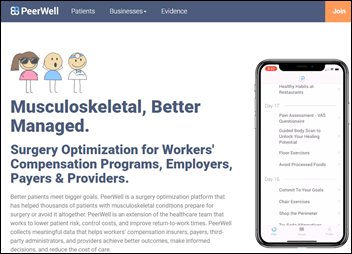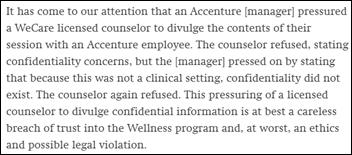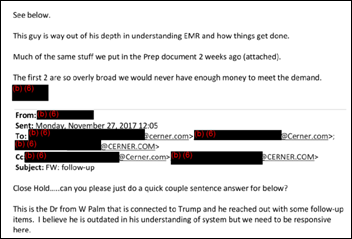EPtalk by Dr. Jayne 8/29/19
There has been quite a bit of discussion in the physician lounge about recent articles looking at health outcomes and social spending in the US compared to other comparable countries. The authors used data from the Organization for Economic Cooperation and Development spanning 1980 to 2015 and compared relative spending on social services and healthcare.
Countries in the dataset included Australia, Canada, Denmark, France, Germany, Japan, the Netherlands, Sweden, Switzerland, and the UK. They found that non-US countries spent an average of 8.8% of their gross domestic product (GDP) on healthcare, but the US spent 16.8%. In comparison, the US spent 16.1% of GDP on social services compared to 17% in other countries. When education was included in social spending, the US spent 19.7% of GDP compared to other countries’ 17.7%. The authors also found that in the US, a greater portion of spending occurs for the elderly.
The findings contradict the belief that the US spends so much more on healthcare because it doesn’t spend enough on social services. Previous analyses found that US healthcare spending is greater due to labor, pharmaceutical, and administrative costs, which shouldn’t be a surprise to anyone who works in the industry.
Several of my colleagues who are department chairs were also in a heated discussion about CMS star ratings on the Hospital Compare. CMS recently announced that updates to the methodology behind the ratings will be delayed until 2021, although CMS will continue to publish the ratings. Many hospital organizations are asking for the ratings to be removed or suspended until the updates are implemented.
Although the ratings are better than having no information at all, they’re difficult for patients to use when making decisions. For example, my local academic medical center has a lower rating than the closest community hospital, but if I needed anything more complex than removing my gallbladder or appendix, I’d be headed straight to the lower-rated facility.
CMS received 800 comments within 145 letters from various organizations, many stating that they feel the ratings are overly vague, they are too complex, and they oversimplify quality measurement. Submissions asked for greater precision in the ratings along with improved apples-to-apples comparisons. CMS will use the comments to develop the proposed rule for release in 2020, so the current methodology remains in place. A public listening session will be held on September 19 to further discuss the ratings and proposed changes.
Direct Primary Care was also a hot topic, with one physician noting he’d like to make the jump “to get out from under the corporate overlords.” The DPC movement might get a boost if The Primary Care Enhancement Act of 2019 (HR 3708) becomes law. The Act would update the US tax code to allow patients with health savings accounts (HSAs) to use those funds for DPC payments. Currently, DPC payments are treated as insurance premiums, so patients trying to use HSA funds incur a tax penalty. The number of primary care physicians considering a move to a more direct model is on the rise. A previous bill failed to pass in 2017.
Paladina Health and SSM Health are forming a direct primary care joint venture in St. Louis. There are many different DPC models, and this one is of the direct-to-employer variety. Employers will pay a flat fee to cover physician services, including office visits, some medications, and labs. I have a friend who works for Paladina Health and he enjoys seeing fewer than a dozen patients a day ,with office visits that are long enough to actually tackle patient problems and discuss non-pharmaceutical interventions like diet and exercise. He’s skeptical about the joint venture with SSM because one of the draws for him to work for Paladina Health was getting away from being employed by a hospital system. SSM Health plans to offer direct primary care to its own employees who are covered under its health plan.

The American Medical Informatics Association announced the keynote speakers for its annual symposium in November. CMS Administrator Seema Verma will keynote on Sunday, November 17, and patient advocate Peter Kapitein will speak on Wednesday, November 20. Kapitein hails from the Netherlands, and the part of his bio that caught my attention was his role in founding a fundraising bicycle ride up the Alpe d’Huez, one of the grueling highlights of the Tour de France. His bio also notes that his employer (the Dutch central bank) “facilitates him to work three days a week for the victory over cancer.” I can’t wait to hear more in person.
The Electronic Health Record Association (EHRA) has given its support for the new NCPDP SCRIPT version 201701 standard for electronic prior authorization (ePA) of prescription drugs under Medicare Part D. However, it did note some concerns around the deadline for implementation, recommending a full 24 months for implementation once the final rule is published. The standard is designed to allow pharmacies to communicate with practices using expanded electronic transactions, reducing the number of phone calls needed to complete prior authorizations. EHR and pharmacy vendors have to create updates and their clients will need to modify their systems, so it’s not a small undertaking. The current proposal requires implementation on January 1, 2020 and the new version of the SCRIPT standard isn’t fully backwards compatible, which could cause issues. EHRA is also recommended an update to HIPAA to reference the new standards since some individual states may be pursuing their own.
Individual state standards would be just about the worst thing we could interject into anything involving healthcare IT and especially interoperability. Clinicians practicing in cities close to state borders might be caught in the crossfire like they currently are with requirements for paper prescriptions, resulting in multiple workflows which doesn’t really help efficiency.
In my past life, we had to maintain multiple different paper prescription formats along with custom code to ensure the correct version was printed based on the patient’s pharmacy of record rather than the location of the practice. Our EHR vendor only supported script generation based on the latter, and contentious pharmacists across the state line refused to honor our prescriptions. In my current practice I have to deal with different local rules regarding controlled substances (you can purchase pseudoephedrine on one side of the street without a prescription, but must have a paper script on the other) and it’s a pain. It’s also probably one of the reason we dispense a lot of the drug from our in-house pharmacy, so patients just don’t have to mess with it.
I’ve also run into the differences in state standards in my recent foray into telehealth, dealing with different standards on reportable conditions ranging from sexually transmitted infections to dog and cat bites. For the latter two, most states require physician reporting, but the mechanism varies dramatically. In my home county, I can report via email, while in a neighboring county it has to be a phone call, and across the state line it has to be a faxed form. Thank goodness for Google, which helps me track it all down as the need arises.
What do you think about individual state standards for healthcare IT? Leave a comment or email me.

Email Dr. Jayne.


























































Traditionally Professional Courtesy is something that physicians gave each other - but we had to be careful with it when…